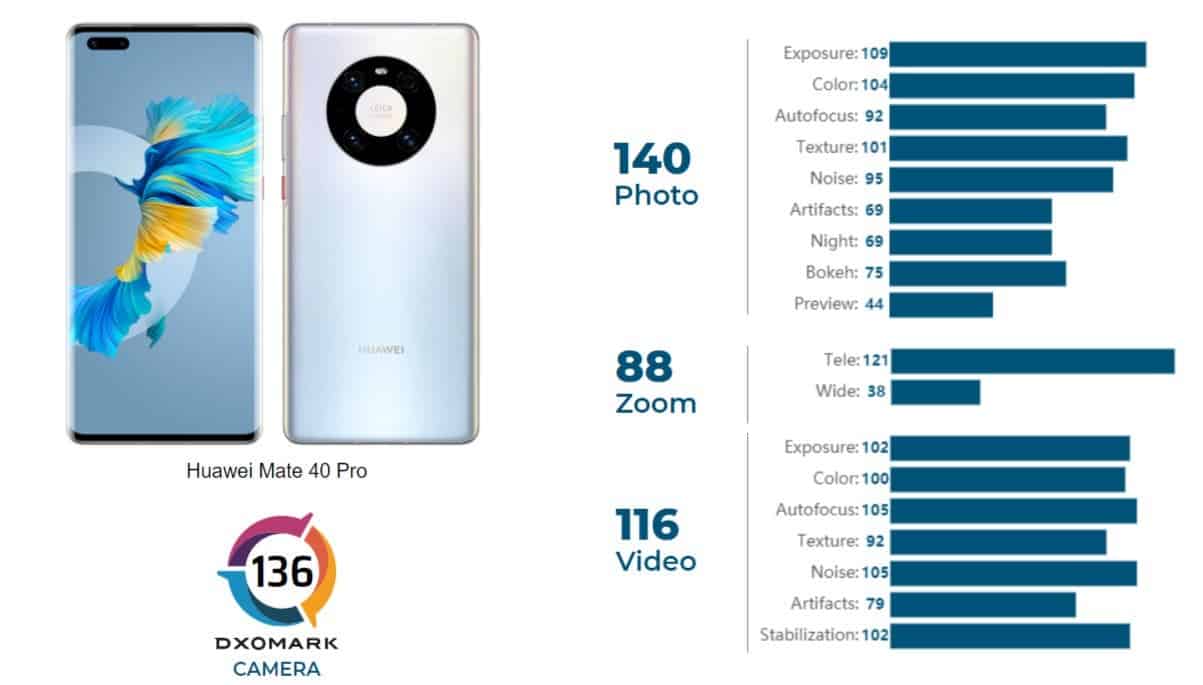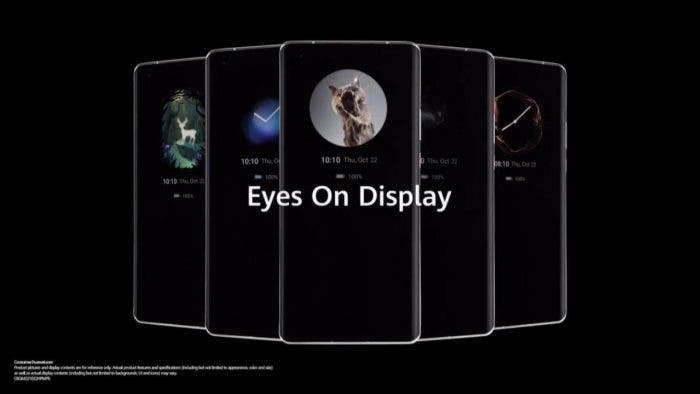Yesterday, the premiere of the Huawei Mate 40 family took place, which received the EMUI 11 user interface with the new Eyes on Display (EOD) function. This is an advanced version of Always-on Display (AOD), which allows illuminating some LEDs so that you can show a small amount of information that you need to quickly access from the lock screen.
EMUI 11 introduces Eyes On Display as an advanced version of the AOD
And since the information is displayed on a black background, it practically does not consume a lot of battery. In practice, it turns out that the smartphone seems to be asleep, but at the same time it constantly maintains the display of the necessary data on the screen. For example, icons for missed call, time and battery charge.
Huawei has come up with its own interpretation of this feature, giving it the name Eyes On Display. Its trick is that it follows the user’s eyes using the front camera and a gesture sensor. As soon as the user looks at the screen, the necessary information will show up on it, while the rest of the time the display “sleeps”.
Eyes On Display works only on smartphones that have a 3D camera with a depth sensor and a gesture sensor on the front panel. At this stage, this option will be exclusive to the flagships of the Huawei Mate 40 series, and it is not clear if it will appear later in the P40 series.
Huawei Mate 40 Pro is the New King of Mobile Photography
Yesterday, Chinese phone maker Huawei announced the new Mate 40 series lineup, which includes the more “affordable” Mate 40, along with its bigger brothers, the Huawei Mate 40 Pro and Mate 40 Pro Plus. Following the announcement, the renowned camera analysis site DxOMark released their review for the Mate 40 Pro.
Huawei Mate 40 Pro Reviewed on DxOMark: It’s the New King of Mobile Photography

Let’s start with with final total score of 136 points. This score is then split into “Photo” in which the smartphone achieves a whopping 140 points; “Video” with 116 points and a new metric called “Zoom” which, as the names suggests, really takes into consideration the zoom capabilities of the device. In Zoom the Mate 40 Pro got 88 points.
Either way, the final total score of 136 points puts the Mate 40 Pro in the first place on DxOMark’s ranking system; thus making it the new king of mobile photography.
Before looking further into the review, let’s recap the camera hardware we find on the handset. Starting with the primary 50 MP 1/1.28″ sensor (12 MP output) with 23 mm-equivalent (1x defined as 27 mm) f/1.9-aperture lens, full-pixel Octa-PD; paired with an ultra wide 20 MP 1/1.54″ sensor with 18mm-equivalent f/1.8-aperture lens, PDAF; and finally a telephoto 12 MP 1/3.56″ sensor with 125mm-equivalent f/3.4-aperture lens, PDAF, OIS. The device also has a multispectral color temperature sensor. While on the software side, the smartphone can record 4K video at 60fps.
Follow Gizchina.com on Google News for news and updates in the technology sector.





